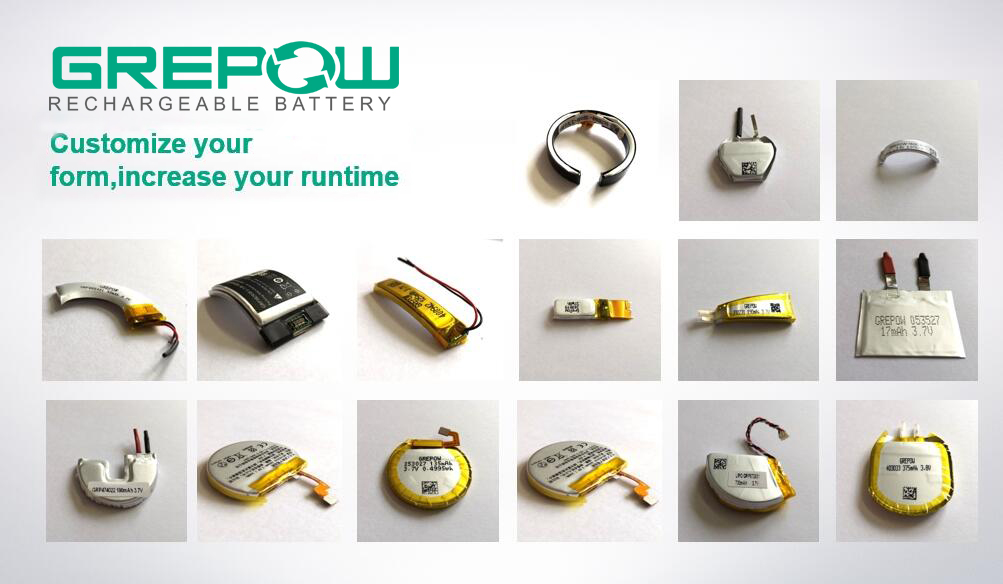
What are the button cells?
Button cells are distinguished by their shape and come in a wide variety of sizes and thicknesses. They are generally larger in diameter and thinner than cylindrical batteries, such as AAA on the market. Consumers will also most often use and throw away their button-cell batteries without checking to see if they’re rechargeable or not.
We will further explore these characteristics and applications of button cells in this article.
Classification of button cells
Button cells are usually divided into rechargeable and non-rechargeable ones. The English letters on a button-cell battery represent the type of battery while the number represents the size. The first two digits represent the diameter, and the last two digits represent the thickness.
Most button cells are one-time-use (i.e non-rechargeable, also known as a galvanic battery). They belong to the dry battery category although they are different from the general cylindrical batteries (AA, AAA, AAAA)
Rechargeable button cells (also known as secondary batteries) are usually built into the product, such as the case in small Bluetooth headsets.
Application
A variety of micro-electronic products carry button-cell batteries because of how little space they occupy, their lightweight, easy use, and long-lasting power supply (just to name a few). These cells have a diameter ranging from 4.8mm to 30mm and a thickness ranging from 1.0mm to 7.7mm.
They are generally used for all kinds of electronic products as backup power. Products include but are not limited to the following: computer motherboards, electronic watches, electronic dictionaries, electronic scales, remote controls, electric toys, cardiac pacemakers, electronic hearing aids, counters, and cameras.

Features of various types of button cells
Alkaline button cell
Due to this battery’s large capacity, excellent low-temperature performance, and a low price, it can meet the demand of large current continuous discharge requirements. Its shortcomings include its insufficient energy density and an unsmooth discharge voltage.
The alkaline manganese button cell uses manganese dioxide for the positive electrode, zinc for the negative electrode, and potassium hydroxide for the electrolyte. Its nominal voltage is 1.5V, and it has a good discharge effect although it is relatively expensive. The nominal capacity is 15mAh to 140mAh. It is mostly used in electronic toys, hearing aids, lighters, watches, and so on.
Silver Zinc Oxide button cells
This type of battery uses silver oxide as the positive electrode, zinc as the negative electrode, and an alkaline solution as the electrolyte. It can be made as either a primary battery or a storage battery. Due to the high cost of silver, it is mainly used as a button cell.
This button cell has a long life and large capacity, and it is widely used. It consists of silver oxide as the positive electrode, metal zinc powder as the negative electrode, and potassium hydroxide or sodium hydroxide as the electrolyte. Electrical energy is generated through the chemical interaction between zinc and silver oxide.
This button cell also has a higher capacity than carbon or alkaline button-cell batteries. It has good voltage stability. For instance, when the battery is at 90% of its capacity, the voltage is stable at 1.45V or more; when the battery has 10% of its capacity, rapid linear discharge is down. This battery has a leak-proof effect, and it is suitable for long-lasting use. It is commonly used in hearing aids, cameras, watches, calculators, and other applications.
In addition, button-cell batteries that use zinc electrodes, such as alkaline batteries, silver oxide batteries, zinc-air batteries, may contain mercury due to the manufacturing process. Therefore, it is necessary to observe whether the battery case is marked with mercury content.
Lithium polymer button cell batteries
These are the best of all the button-cell batteries especially since they are rechargeable and mercury-free. Currently, Grepow’s rechargeable button-cell batteries are lithium polymer batteries and are widely used in hearing AIDS, earbuds, thermometers, watches, and so on. Grepow’s button-cell batteries can be specially designed to have a wide temperature range of -50℃ to 50℃ or -20℃ to 80℃.


At present, there are two models in mass production: GRP1054 and GRP1254. Others can be made according to your products’ size, discharge capacity or demand, cycle life, discharge current. Some other special requirements, such as fast-charging, low-temperature use.
If you want to know more about button cells, please continue to follow our blog.
If you are interested in our products, please contact us at info@grepow.com.
Official website: www.grepow.com
Official website: www.grepow.com


